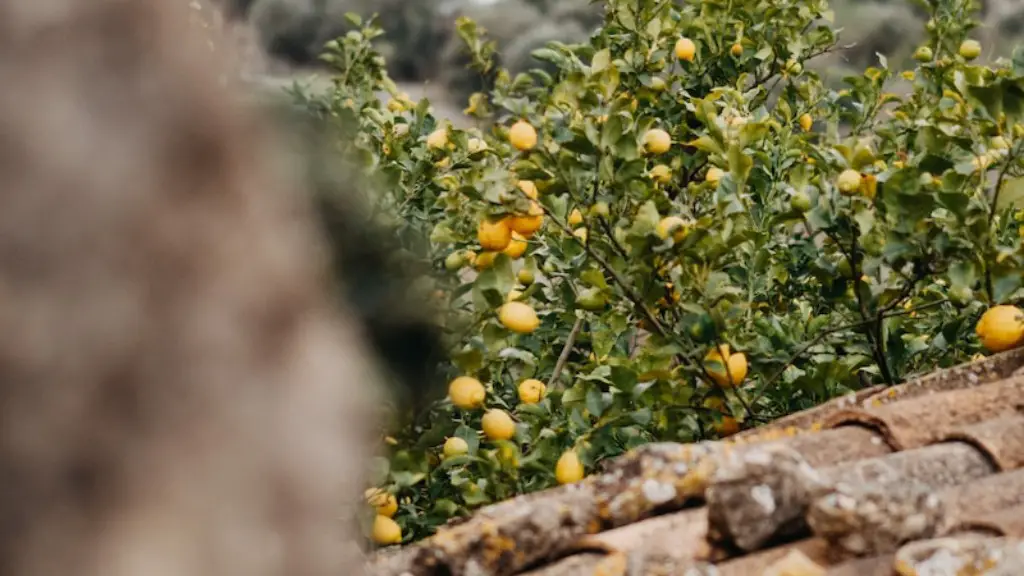Avocados are one of the most popular and nutritious fruits. They can be eaten fresh, mashed, or even blended into a dip. The question of whether an avocado tree needs full sunlight to successfully produce avocados is an important one for gardeners and farmers who grow avocados.
For the most part, the answer is yes. Avocado trees prefer full sun, but can tolerate some shade. With the right location, soil, and water, the tree can thrive and produce a high yield of delicious avocados. Exposure to direct sunlight is essential for vigorous and healthy growth.
Experts recommend planting avocado trees on warm, sunny sites in well-draining soil. Too much shade can reduce yield and slow down flower production. While the tree doesn’t need full sun all day long, a minimum of 6 to 8 hours of direct light is ideal. These trees can grow in a variety of climates, but the best temperatures for growth range between 55 and 85°F.
It’s important to remember that the fruit on an avocado tree begins to ripen several months before the leaves start to change color. So, the best time to plant an avocado tree is when the fruit is just starting to soften. That way, the tree will be in full sun when it starts to bloom and will have the energy to produce fruit.
Water is also necessary for avocado production, but the amount depends on the tree’s location. Some areas require careful irrigation to get avocados to mature, while other areas have natural rainfall that’s sufficient to keep the tree healthy.
For those who are growing avocados organically, it’s important to keep an eye on the health of your soil. Regularly having the soil tested can help ensure the tree is getting enough nutrients, and mulching the soil surface will help keep moisture in.
Organic farmers can also take steps to attract beneficial insects, such as ladybugs, to their orchards. These friendly bugs can help keep pests at bay and increase yield. Lastly, it’s always a good idea to run any kind of pesticide by a professional — all chemicals have the potential to do more harm than good.
Soil
Good soil is essential for healthy avocado production. The best soil has very good drainage but may need amendments so that it won’t dry out during long periods of time. If the soil doesn’t drain well, roots can become waterlogged and the avocado tree might suffer. For best results, improve the soil organic content by composting or manure, as this will help the tree not just grow, but also produce better fruits.
The pH of the soil is important, as well. Avocado trees prefer a pH range between 6.0 and 7.0. A value outside of this range can result in nutrient imbalances and slower growth. Too low of a pH can be corrected by adding lime, and too high of a pH can be neutralized with sulfur or sulfuric acid.
Additionally, fertilizers should be used when planting an avocado tree. It’s important to check with an agricultural expert for the best type of fertilizer for the area and local climate, as soil and climate vary from location to location.
Pruning
Pruning is another important step for growing healthy avocado trees. Pruning needs to be done at least once a year, and at least once every other year. Pruning encourages strong growth and a higher yield of fruit. It also helps shape the tree and control its size. Removing dead, damaged, or diseased branches can keep the overall health of the tree much better.
When pruning, it’s important to remember that new growth takes place at the center of the tree, and that removing too many branches can jump start new growth and slow down the harvest. It’s also important to note that sharp tools should be used and to prune in the early morning or late afternoon, as the pruning cuts are more likely to heal quicker.
Harvest
Avocado harvest periods vary between varieties, but typically most will begin to ripen 4 to 5 months after flowering. The one sure way to tell if an avocado is ready to be picked is by lifting the fruit off the tree by the stem. If the stem falls away, the avocado is ready for picking.
Fruits can also be tested for maturity by pressing the flesh of the fruit, as this can indicate how mature the fruit is. Soft fruits indicate they are ready to be harvested, while hard fruits indicate they need more time on the tree.
It’s also important to pay attention to the visible signs of maturity, such as the color of the fruit and the texture of the skin. As the fruit ripens, the skin will become softer while the color changes from green to yellow or purple. It’s important to harvest avocados before they become overly ripe, as this can reduce the shelf life of the fruit.
Storage
Once harvested, avocados should be stored in a cool, dry place. It’s best to store the fruit at around 55°F and in an environment that has 50 to 75 percent relative humidity. High humidity can reduce the shelf life of the fruit, and too warm of temperatures can accelerate ripening and reduce the shelf life even further.
Avocados can also be ripened by placing them in a paper bag and leaving them in a cool area. Once ripe, the fruit should be used immediately. Unripe avocados can also be frozen for later use. To freeze, simply mash the avocados and place in a freezer-safe container.
Pests and Diseases
Avocado trees can be susceptible to pests and diseases that can reduce yields and cause leaves to yellow. To control pests and diseases, it can be important to routinely inspect the tree for signs of infestations and contact an agricultural expert if anything looks abnormal. Additionally, avoiding overwatering can help keep the tree healthy, as excessive moisture can create a hospitable environment for pests and diseases.
Common pests for avocado trees include mealybugs, scale, and whiteflies. To control these, it can be important to employ natural predators and provide a clean, pest-free growing environment. Diseases such as root rot, anthracnose, and leaf spot can also affect avocados, and can usually be managed with fungicides and proper water management.
Pest Management
Pest management begins with prevention. Avoiding planting avocados near any known infested crop and keeping orchards free of weeds can help a lot in keeping pests away. Additionally, insect traps and natural predators, such as snakes and lizards, can play a part in reducing the population of any pests.
These natural predators can also help pollinate the trees, which is essential for avocado production. Additionally, organic farmers can grow flowers around the base of the tree to attract beneficial insects and draw away pest insects. Finally, selective pruning and regular applications of insecticides can help further reduce pest populations around the avocado tree.




